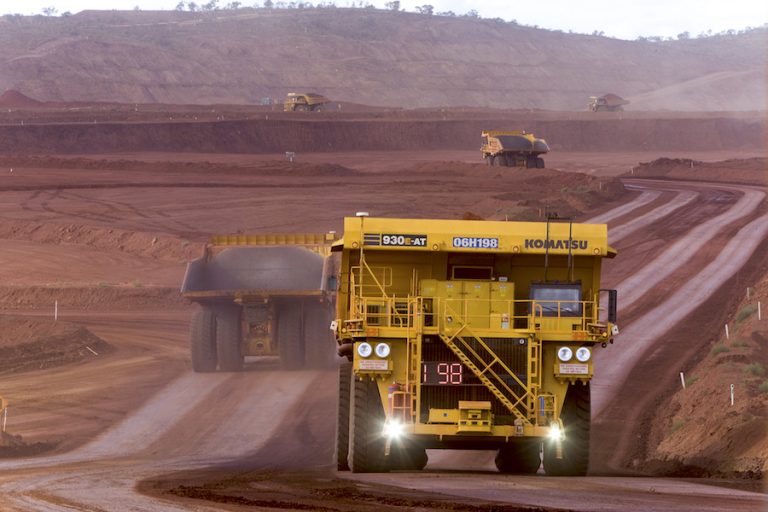Environmental Concerns In The Pilbara: Rio Tinto's Response To Recent Criticism

Table of Contents
Rio Tinto is a major player in the Pilbara's iron ore industry, with extensive mining operations impacting a vast area. Recent criticism stems from various sources, including specific environmental incidents, concerns about water usage, dust pollution, and the impact on local biodiversity. These concerns have prompted public debate and calls for greater transparency and accountability from the mining giant. This article aims to provide a comprehensive overview of Rio Tinto's response to these environmental concerns in the Pilbara.
Rio Tinto's Acknowledgment of Environmental Impacts in the Pilbara
Specific Environmental Challenges Faced in the Pilbara
The Pilbara's unique environment presents several significant challenges for mining operations:
- Dust Pollution: Wind erosion from mining activities generates significant dust plumes, impacting air quality and potentially affecting human health and local ecosystems. Reports indicate dust levels exceeding acceptable limits on various occasions.
- Water Management: The Pilbara is a water-scarce region. Mining operations require substantial water resources, potentially impacting local water tables and aquatic ecosystems. Studies have highlighted the strain on water resources due to increased mining activity.
- Biodiversity Loss: Mining activities inevitably lead to habitat destruction and fragmentation, threatening the region's unique biodiversity. The loss of native flora and fauna is a major concern, with some species facing increased extinction risk.
- For example, the impact on local marsupials and bird populations has been documented in several scientific papers.
Rio Tinto's Public Statements and Official Responses to Criticism
Rio Tinto has issued numerous press releases and sustainability reports acknowledging the environmental challenges of their operations in the Pilbara. Their statements often highlight their commitment to sustainable mining practices and responsible environmental stewardship. However, the tone of their responses has varied. While some statements emphasize proactive measures, others have been perceived as defensive in the face of criticism. For instance, a recent statement emphasized their investment in dust suppression technologies, while a previous response focused more on the economic benefits of their operations. Analysis of these public statements provides crucial insight into the company's approach to managing environmental concerns in the Pilbara.
Analysis of Rio Tinto's Mitigation Strategies in the Pilbara
Detailed Examination of Specific Mitigation Strategies
Rio Tinto has implemented various mitigation strategies to minimize their environmental footprint in the Pilbara, including:
- Dust Control: Implementing advanced dust suppression techniques, including water sprays, chemical suppressants, and windbreaks. They've invested in specialized equipment and technologies for monitoring and controlling dust levels.
- Water Conservation: Implementing water recycling and reuse programs, investing in water-efficient technologies, and exploring alternative water sources. This includes partnering with local water authorities to manage water resources sustainably.
- Rehabilitation of Mined Areas: Implementing comprehensive rehabilitation programs to restore mined lands to a productive state, including revegetation and topsoil replacement. These efforts aim to minimize the long-term environmental impact of their mining operations.
- Biodiversity Protection: Implementing biodiversity offsetting programs, conducting ecological surveys, and creating protected areas within mining lease areas to conserve native species.
Investment in Research and Development for Environmentally Friendly Mining Techniques
Rio Tinto invests significantly in research and development to explore more sustainable mining technologies and practices. They are actively involved in projects exploring alternative energy sources, reducing greenhouse gas emissions, and improving water management techniques. This includes collaborations with universities and research institutions to develop and implement innovative solutions. This commitment to R&D underscores the company's dedication to minimizing the environmental impact of their Pilbara operations.
Independent Assessments and Community Perspectives on Rio Tinto's Efforts
Reports from Independent Environmental Agencies and NGOs
Independent assessments of Rio Tinto's environmental performance in the Pilbara vary. Some reports from environmental agencies highlight progress in certain areas, particularly in dust control and water management, while others express concern about the overall impact on biodiversity and the long-term effects of mining activities. It's crucial to consider both positive and negative findings to get a balanced perspective.
Community Engagement and Stakeholder Consultations
Rio Tinto engages with local communities and Indigenous groups through various consultation processes. These include community meetings, workshops, and feedback mechanisms designed to gather input on their environmental practices. However, the transparency and effectiveness of these engagement strategies have been questioned by some stakeholders.
Media Coverage and Public Perception of Rio Tinto's Environmental Record
Media coverage of Rio Tinto's environmental record in the Pilbara has been mixed, reflecting the complexity of the issue. While some reports highlight positive initiatives, others criticize the company's environmental performance. Public perception is shaped by this diverse media coverage, influencing the overall assessment of Rio Tinto's corporate social responsibility. Understanding this public perception is vital for understanding the broader context of environmental concerns in the Pilbara.
Addressing Environmental Concerns in the Pilbara: A Call for Continued Improvement
In conclusion, Rio Tinto's response to environmental concerns in the Pilbara is a complex issue with both successes and shortcomings. While the company has made efforts in mitigation strategies, ongoing challenges remain. Independent assessments highlight both progress and areas needing further improvement. Greater transparency, more effective community engagement, and a stronger focus on long-term environmental sustainability are essential for responsible mining in the Pilbara. We encourage readers to learn more about the issue, participate in discussions regarding Pilbara environmental sustainability, and advocate for responsible mining practices to ensure the long-term protection of this unique and valuable ecosystem. Holding corporations accountable for their environmental impact in the Pilbara is paramount for ensuring a sustainable future for the region.

Featured Posts
-
 2025 Ncaa Tournament Bishop Englands Impact On Louisvilles Dance
May 23, 2025
2025 Ncaa Tournament Bishop Englands Impact On Louisvilles Dance
May 23, 2025 -
 Lahore Qalandars End Uniteds Winning Streak Thanks To Sikandar Raza
May 23, 2025
Lahore Qalandars End Uniteds Winning Streak Thanks To Sikandar Raza
May 23, 2025 -
 Vybz Kartel To Headline Barclay Center In April Nyc Concert Details
May 23, 2025
Vybz Kartel To Headline Barclay Center In April Nyc Concert Details
May 23, 2025 -
 Analyzing The One Percent Clintons Budget Battles And Presidential Power
May 23, 2025
Analyzing The One Percent Clintons Budget Battles And Presidential Power
May 23, 2025 -
 Last Wicket Stand Saves Crawley From Gloucestershire Defeat
May 23, 2025
Last Wicket Stand Saves Crawley From Gloucestershire Defeat
May 23, 2025
